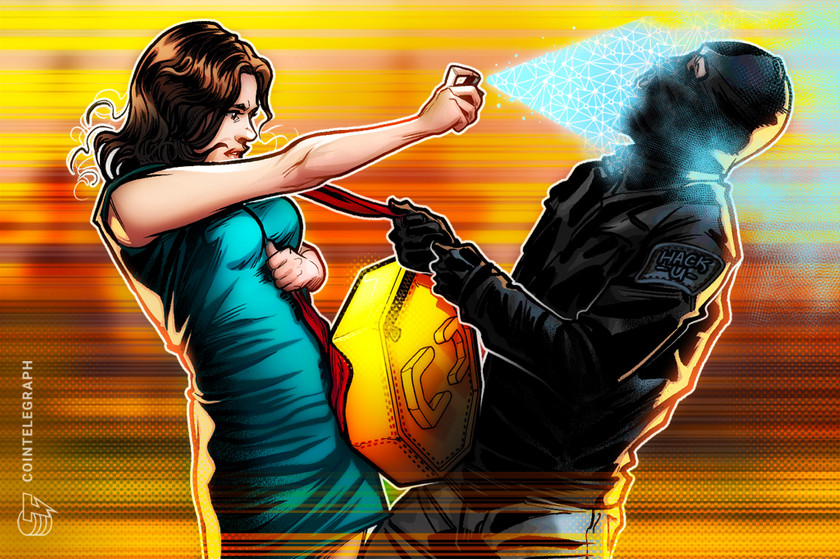
To protect against crime in the metaverse, take precautions, such as using secure passwords, and report suspected criminal activities to law enforcement.
How to protect yourself in the metaverse
To protect yourself in the metaverse, use strong passwords, be cautious of suspicious activity, and limit the amount of personal information shared online.
Here are some ways to protect yourself in the metaverse:
- Use strong and unique passwords: Create secure passwords utilizing a variety of letters, numbers and symbols and steer clear of using the same one for many accounts.
- When disclosing personal information, exercise caution: Be cautious when sharing information online and be on the lookout for unauthorized requests for personal information.
- Utilize two-factor authentication: To further secure your accounts, use two-factor authentication.
- Update your hardware and software: To guard against any vulnerabilities, make sure to keep your software and devices up to date with the most recent security upgrades.
- Report suspicious activity: Inform the proper authorities or the platform’s moderation team of any questionable activity or behavior.
- Pay attention to phishing attempts: To deceive you into revealing personal information or login passwords, you should be on the alert for phishing attempts.
- Use a virtual private network (VPN), if possible: When entering the metaverse, use a VPN to secure your internet connection and safeguard your personal data.
- Set privacy preferences: Utilize the privacy settings and tools offered by the metaverse platforms to control how much of your personal information is exposed to others.
- Be aware of the potential sexual harassment: Take precautions to shield yourself from offensive or unwanted behavior by being aware of the possibility of sexual harassment in the metaverse.
- Beware of scammers: Criminals may try to fool you by using social engineering, making up identities or impersonating.
By being mindful of the hazards and cautions in virtual reality worlds, users can take further precautions to protect themselves. This can entail being watchful with the data they disclose online, exercising caution when speaking to strangers and blocking or reporting any individuals who engage in inappropriate behavior.
Are there any sexual harassment risks in the metaverse?
In virtual worlds, people may feel empowered to engage in unethical or criminal behavior, such as sexual harassment, due to the anonymity and lack of oversight by law enforcement agencies.
In the metaverse, sexual harassment can take many forms, including:
- Virtual sexual assault: Sexual propositions, unwanted touching and other unwanted physical contacts could all constitute virtual sexual assault.
- Online sexual harassment: Online sexual harassment may take the form of sending unwelcome sexually suggestive messages, exchanging inappropriate or sexually explicit photographs, or making vulgar remarks.
- Cyberstalking: This can involve persistently sending unwelcome messages or following someone online with the intention of intimidating or harassing them.
- Non-consensual sharing of intimate images: Sharing intimate photos or films of someone without their consent is referred to as non-consensual sharing of intimate photographs or revenge porn.
- Online grooming: This may involve adults pursuing children or other vulnerable individuals in virtual spaces with the intention of sexually exploiting them.
Metaverse users should report any instances of sexual harassment to the relevant authorities, and metaverse companies should have strong policies in place to handle and prevent it.
What financial crimes occur in the metaverse?
Money laundering, fraud and asset theft are all types of financial crimes that can cost people and virtual communities a lot of money in the metaverse.
The use of cryptocurrencies to conceal the proceeds of criminal activity, such as the sale of illegal narcotics or weapons, by hiding the source and ownership of the money through a convoluted web of transactions is an example of money laundering in the metaverse.
A Ponzi scheme is an example of financial fraud in the metaverse, which involves the use of virtual goods or money to trick investors into thinking that their money is being put toward a successful project when, in reality, the returns are being paid from the contributions of new investors rather than from any genuine business gains. Moreover, criminals may use the metaverse to conduct financial transactions that are not reported to tax authorities in order to evade taxes.
Criminals may also utilize hacking methods to steal users’ confidential financial data in the metaverse. Similarly, criminals may use the metaverse to conduct cyberextortion, which is a type of digital blackmail in which a criminal demands payment in exchange for withholding sensitive information or data.
These are only a few instances of how metaverse users are targeted by cybercriminals; therefore, it’s crucial to be aware of these threats and take precautions to safeguard your information. One can do this by using two-factor authentication and strong passwords, being cautious about unsolicited requests for personal information, and making sure their software and devices are up-to-date with the most recent security patches.
How do cybercriminals target the metaverse?
By taking advantage of flaws in virtual systems and user behavior, such as malware infections, phishing scams and illegal access to personal and financial information, cybercriminals prey on the metaverse.
Cybercriminals may target the metaverse in a variety of ways, including:
- Phishing scams: Thieves may employ phishing techniques to deceive victims into disclosing personal information or login credentials, which can then be used for identity or data theft or other unlawful acts.
- Hacking: To steal money or personal information, criminals may try to hack into user accounts or metaverse platforms.
- Malware: To access sensitive data or carry out illicit operations, criminals may use malware to infect virtual environments or devices that support the metaverse.
- Frauds: Criminals may leverage the anonymity and lax regulation of the metaverse to carry out scams such as Ponzi or pyramid schemes.
- Ransomware: Thieves may use ransomware to encrypt a user’s digital possessions or personal data before requesting payment in exchange for the decryption key.
- Exploiting virtual goods and assets: Cybercriminals may use bots or other tools to buy virtual goods and assets, which they then sell on the black market for real money.
- Creating fake digital assets: Criminals may make false virtual assets and sell them to unwary buyers, causing the victims to suffer financial loss.
- Social engineering: Thieves may take advantage of the metaverse’s social elements to win over people’s trust before defrauding them.
Related: How are metaverse assets taxed?
The “Crypto Crime Cartel” case is one real-world instance of cybercrime in the metaverse. In 2020, it was discovered that a group of cybercriminals had been working in the metaverse, more specifically in the online community of Second Life.
They tricked customers into submitting log-in and personal information via a phishing scam, which they then utilized to steal virtual money and digital assets. The group also perpetrated identity theft and other financial crimes in the real world using the stolen information. Money-laundering crypto criminals were successful in stealing digital assets and currencies worth millions of dollars.
This example demonstrates how cybercriminals might use the anonymity and lax regulation of the metaverse to carry out unlawful acts. It emphasizes the significance of exercising caution when using virtual worlds and taking precautions to safeguard private data and digital assets, such as using strong passwords, being wary of unsolicited requests for personal information and notifying the appropriate authorities of any suspicious activity.
The Decentral Games hack is just another instance of financial crime in the metaverse. A group of hackers attacked Decentral Games, a well-known metaverse gaming site built on the Ethereum blockchain, in 2021 by taking advantage of a flaw in the smart contract. They were able to steal Ether (ETH) and other cryptocurrencies valued at more than $8 million from users of the network.
This illustration shows how susceptible smart contracts and decentralized systems can be to hackers and other sorts of cyberattacks. It also demonstrates how a lack of oversight and regulation in the crypto and metaverse industries can make it simpler for criminals to commit cybercrimes and steal substantial sums of money.
What is the dark side of the metaverse?
The metaverse has the potential to alter the way we interact and engage with one another and technology. However, there are also possible drawbacks and risks, just like with any new technology. Potential problems with privacy, security and legislation are part of the metaverse’s negative side.
One of the main issues with metaverse platforms is privacy. People may disclose more sensitive data and personal information in the metaverse, increasing the risk of hacking and data breaches. Furthermore, there may be less supervision and regulation over how businesses gather and use this data, which might result in the misuse of personal data.
Being a virtual environment, the metaverse is open to various security risks, including hacking, intellectual property theft and misuse of user data that can lead to the loss of personal data, financial harm and damage to the reputation and stability of virtual communities. For instance, the metaverse may be used by criminals to commit additional crimes, propagate malware or steal personal data.
Regulation is another issue because the metaverse is a young and rapidly changing environment. Governments and other institutions can find it difficult to keep up with technology and lack the resources or tools necessary to govern it successfully. This absence of oversight may result in problems like unlawful activity and hazardous content.
However, it is also unclear how society will be affected by the metaverse because it is a brand-new area that is developing quickly. While some experts assert that technology will create more options for community and connection, others counter that it will just increase social alienation and isolation.







